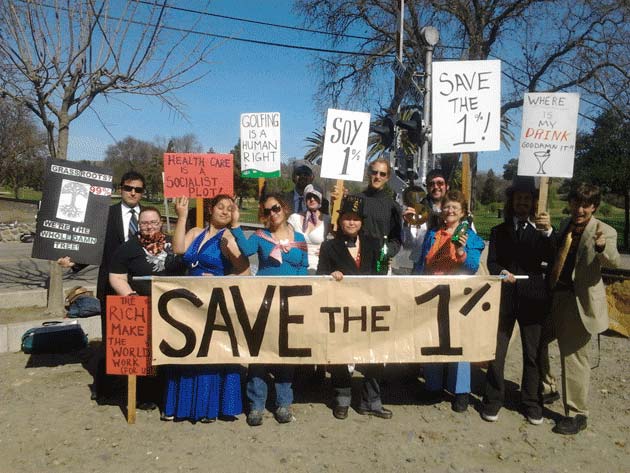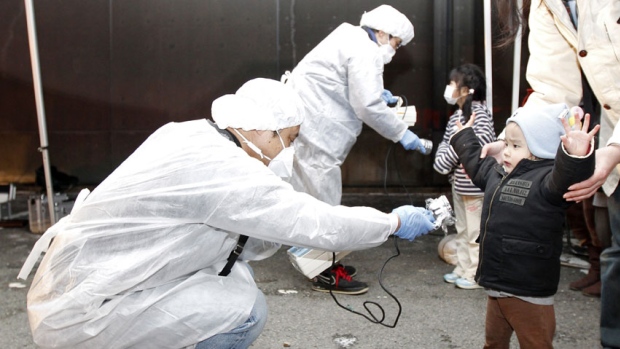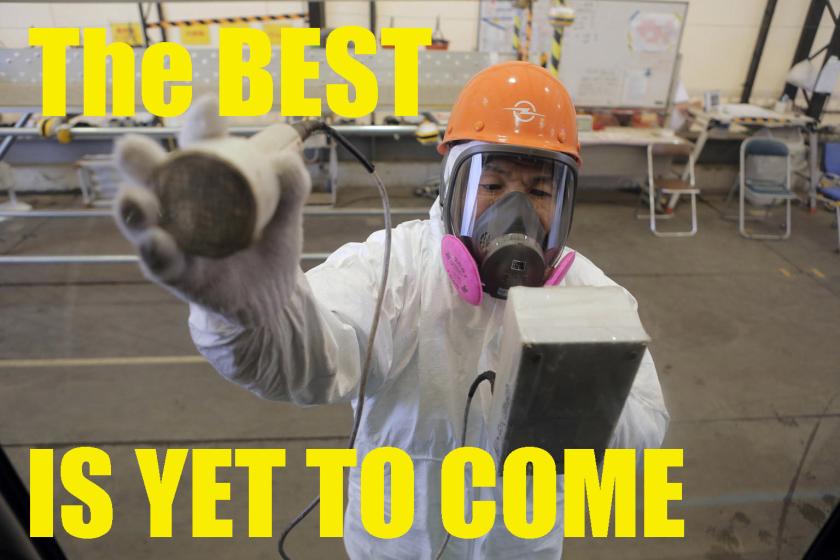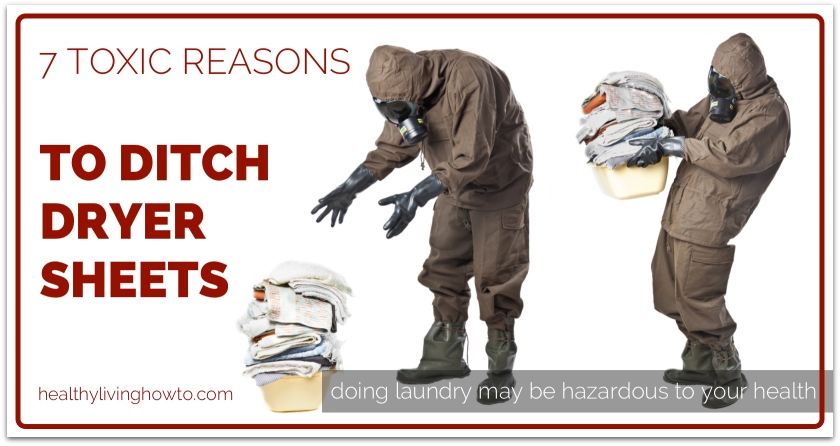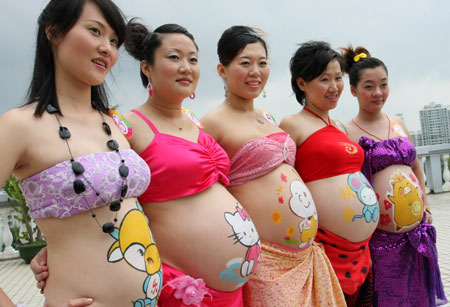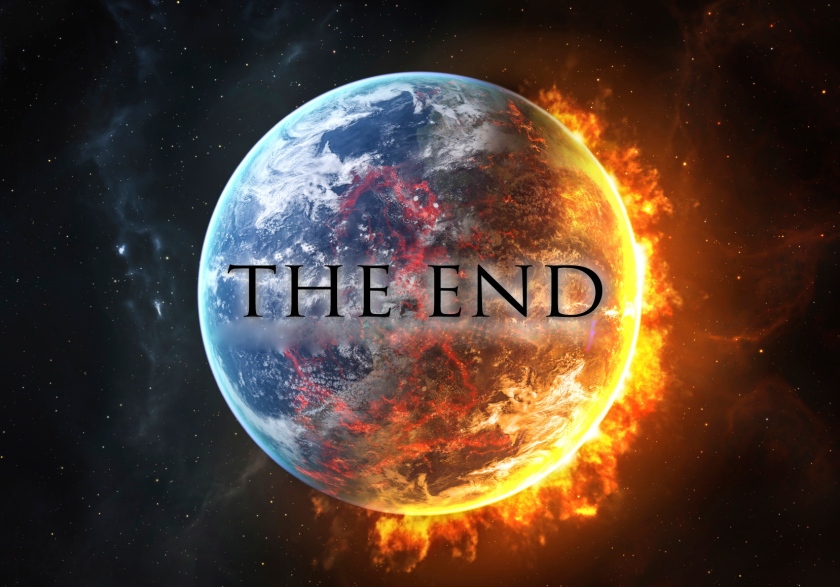A Different 1%
NPR recently reported on a scientific paper that predicted 1% of girls who live in the area effected by the Fukushima nuclear disaster, and were one year old at the time of the meltdown, would get cancer from the radiation exposure resulting from the incident. The report concluded that cancers resulting from the Fukushima nuclear disaster would not raise Japan’s cancer rate very much at all, since about half, or 50% of all Japanese people get cancer at some point in their lives already.
My brain almost exploded when I heard that report. First, I can scarcely imagine what kind of statistical gymnastics it took for them to jump to that conclusion, especially considering that the disaster continues unabated. I mean, the reactors continue to melt, producing heat, steam and huge quantities of deadly radioactive material, that is by no means contained. This material continues to contaminate soil and groundwater in the area, and few believe that anyone can prevent the heavily contaminated groundwater from flowing into the Pacific Ocean. Clearly, the best is yet to come.
Second: Half of all Japanese people can expect to get cancer in their lifetime! That shocked me. Cancer was relatively rare before the Industrial Revolution, which is why they call cancer a “disease of civilization”. Doctors identified the first causes of cancers in the 18th Century, which appeared as rare tumors on the scrota of chimney-sweeps with poor hygiene. 300 years of carcinogenic industrial pollutants later, so many people get cancer that even an ongoing nuclear catastrophe will hardly make a dent in the national cancer rate.
Isn’t that reassuring. Really, why worry about Fukushima? Your dryer sheets will kill you before it does. Your nail polish, oven cleaner, deodorant, air freshener, the smell of your new car, carpet, paint, and furniture will help. Vehicle emissions, industrial incinerators, coal fired power plants, chemical plants and plastics factories provide free carcinogens for people who can’t afford to buy products that contain them. The body burden of pesticides, flame retardants, rocket propellants and a couple hundred other chemicals we inherited from our parents, gave them all a head start. How could one nuclear disaster hope to compete with a full-court press like that.
Finally, even assuming this dubious estimate turns out to be accurate, what kind of metric is the estimated number of additional cancers in one year old girls from Fukushima, for measuring the magnitude of the Fukushima disaster? What about two year old girls? What about five year old girls? What about boys? What about adults? What about kids who haven’t been born yet?
How many of those one year old girls will suffer miscarriages, or have children with birth defects because of radiation from Fukushima? What about 15 year old girls, or 25 year old women? How many miscarriages and birth defects have already resulted from the Fukushima nuclear disaster. How many of those babies will develop cancer later in life?
How does 1% sound for a wild ass guess for any and all of the above questions. I’ll bet that’s as accurate of a guess as the study I heard quoted. Does that sound like an acceptable cost? 1% sounds like almost nothing, doesn’t it? That’s probably why they chose that number for their prediction. One bullet, one hundred people, Russian Roulette anyone? This still doesn’t get to the heart of the issue, because Fukushima is the gift that keeps on giving.
What happens the next time an earthquake triggers a tsunami in the area, and it stirs up all of the radioactive mud just off the coast of the plant, that will probably never be cleaned up, and dumps it all over the countryside? It’s bound to happen, in 50, 100, or 500 yrs or so, and all of that plutonium will be just as fresh and deadly as it is today. What happens in 10,000 yrs when no one there speaks Japanese anymore, or has any idea why this lovely oceanfront real-estate has remained undeveloped? What happens in 10,000,000 yrs, when bipedal felines plant the whole area in catnip? I’ll hazard a guess that 1% of bipedal felines exposed to contaminated catnip develop feline leukemia, using the same math as the researchers quoted on NPR.
…And for what? A few fleeting megawatts of electricity, mostly wasted on garish signage, excessive lighting, electronic toilets and Japanese game shows. Unlike the electricity generated at the Fukushima nuclear power station, the Fukushima nuclear disaster will not go away. The deadly impacts of Fukushima will even outlast the fortunes of Tepco’s shareholders, who profited from the massive public investment in, inherently dangerous, uncompetitively expensive, nuclear power.
The lasting radioactive legacy of the Fukushima nuclear disaster will remain a threat, and an impediment to life on Earth until the sun goes super-nova and burns the Earth to a cinder. Radioactivity from Fukushima, and the contaminated area around it, like Chernobyl, not to mention every other nuclear power plant, laboratory, or weapons facility ever built, will continue to take lives, cause sickness and make life harder on Planet Earth until the end of time.
Life on Planet Earth is hard enough, thank you very much, and we really don’t need the additional burden.
